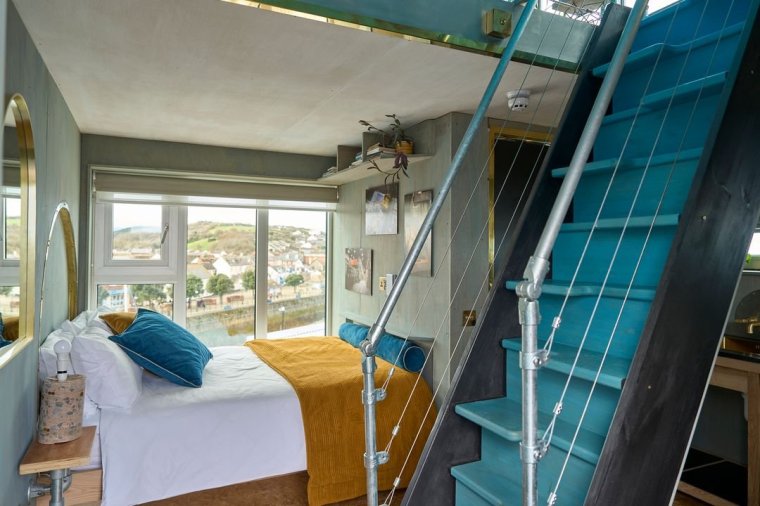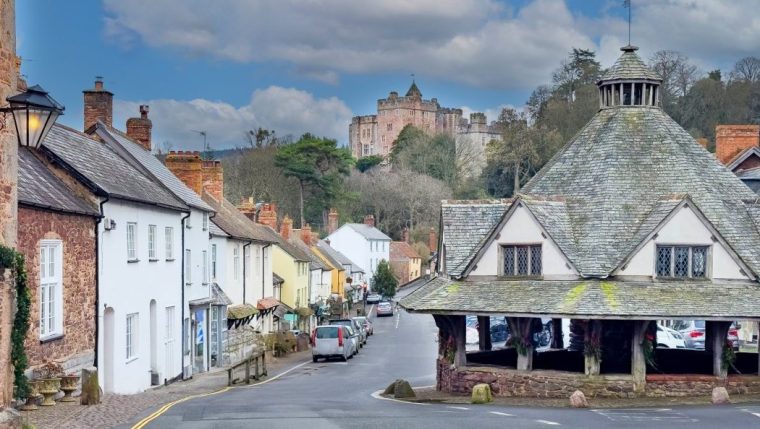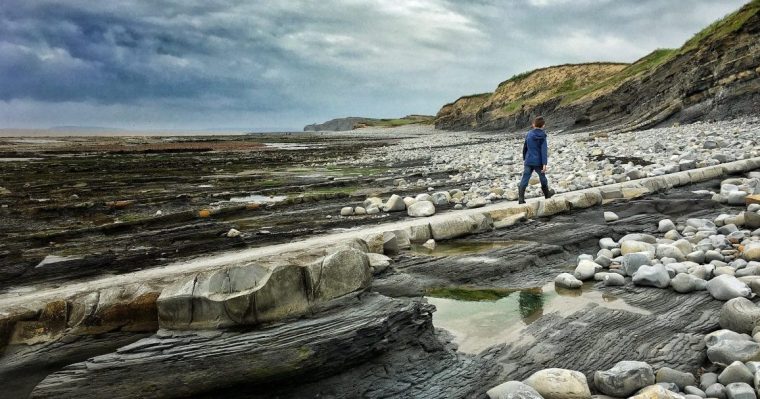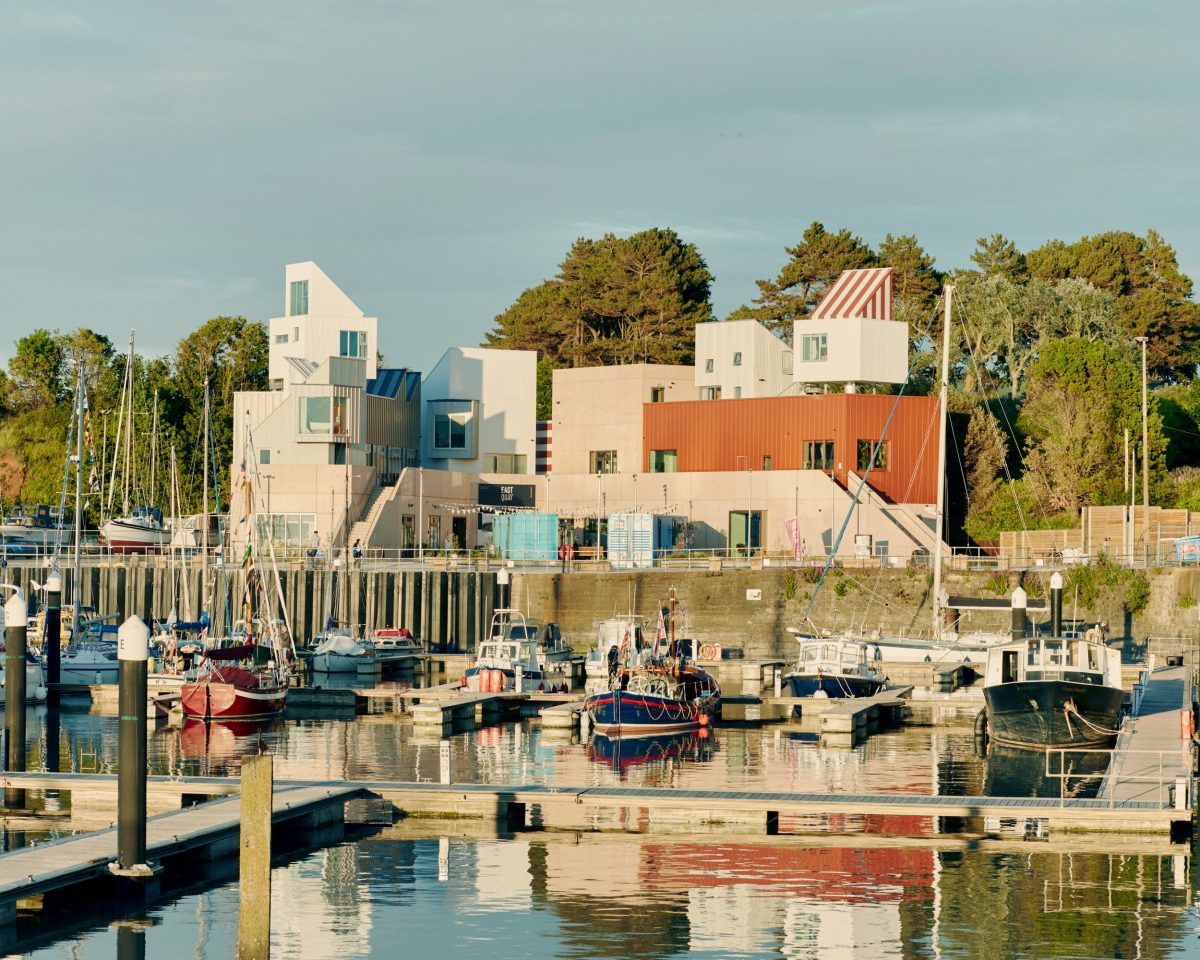Watchet is ancient. Anglo-Saxons, Vikings and Civil War Royalists all made their mark on this north Somerset town, which proudly boasts “1,000 years of maritime history”. Its roots are in boat-building, paper-making and Bristol Channel shipping (mostly iron ore from the local Brendon Hill mines to South Wales). And although tourism is now its mainstay, a gritty industrial vibe still lingers.
Read Next: Six cheaper alternatives to Center Parcs from Ireland to Denmark
Since the commercial harbour closed in the 1990s, Watchet has benefited from regeneration funding. Where there were ships there is now a marina, and the waterfront has gone all 21st century since a group of enterprising local women pioneered the transformation of the town’s disused East Quay into a hub of galleries, artists’ studios and places to stay – all housed in an angular stack of architectural metal cubes in jaunty colours.
This vibrant newcomer coexists with old Watchet – a time warp of shanty singing, skittle alleys, fish and chips, bingo, cider pubs and steam engines.
And if that’s not enough to get you there, the setting is glorious. Sandwiched between Exmoor National Park and the Quantock Hills, Watchet has easy access to some of the most unspoilt landscapes in the West Country.
Where to stay
Choose from one of East Quay’s five themed “pods” – neat metal-clad boxes, perched on stilts or elevated platforms above artists’ studios.
The tiny, split-level homes are furnished with kitchenettes, comfy beds (dressed with organic wool duvets) and sunset views across the harbour to the Bristol Channel.

The Playful Architecture pod has a rainbow bathroom and walls decorated with semaphore codes; Romantic Industrial has “an ocean-liner vibe” and an upcycled bathtub with a sea-view; and Immersive Art is redecorated annually by an artist in residence.
Checking in involves a lot of steep steps, although Stories and Imagination (sleeps four adults and two children) has disabled access. From £110.
Where to shop
The Albatross Print Studio at East Quay displays a great selection of original prints (on paper, fabric and canvas) by local artists, including block-printed tea towels by Sarah Minela Ward and hand-printed cards inspired by the area’s coastal landscapes.
Where to go for lunch
The gloriously old-school Luttrell Arms in Dunster is Grade II listed, with roots in the 15th century. It serves hearty bar meals (pork and apple burger, sandwiches or a traditional Sunday roast) and offers crackling log fires and bags of character.
Where to go for a treat
Enjoy a home-made scone or two (gluten-free option available) with whortleberry jam and cream at Watchet’s family-run and dog-friendly Chives Café.

Where to go for a drink
You won’t see the sun go down from the Pebbles Tavern but there are plenty of other things to look at while supping a pint of Gorge Best (from local brewery Cheddar Ales) inside this friendly little local, where every inch of wall is lined with musical instruments and plastered with pubby posters and memorabilia.
Where to go for dinner
Watchet is not big on fine dining, but East Quay Kitchen fills the void with modern, mezze-style small plates and a small but excellent wine list in a rustic café-style setting (from 5pm to 8pm, Thursday to Saturday).
Where to hit the beach
The rocky local beaches are best for rock-pooling, fossils and geology. There is a Victorian paddling pool at West Street, while Helwell Bay and Kilve are known for ammonites, blue lias and striped Triassic rock formations – and all are within reasonable walking distance. For sand castles, ice cream and cafés, drive (or take the train) to Blue Anchor Bay or Dunster.

Where to go for a walk
Stretch your legs on a coast path walk. On the Watchet Circular, head for Washford (2.5 miles) following the old West Somerset Mineral Railway, or head east along a stretch of the newly designated King Charles III England Coast Path to the spectacular cliff waterfall at St Audrie’s Bay (2.7 miles).
Don’t miss
In the former Anchor Inn, Watchet’s quirky Radio Museum is a unique and impressive collection of vintage radios, televisions and broadcasting equipment dating back to the 1920s (open Wednesday to Saturday; free entry – or make a donation).
Head for Dunster (a 15-minute drive), the picture-perfect mediaeval village where the National Trust’s fairy-tale castle sits on a verdant hill overlooking the Bristol Channel. Explore the castle (a 19th century evocation of the Norman stronghold that once stood on the site), and its glorious subtropical gardens, working Victorian water mill, riverside woodland and dreamy views.

Where to relax
Wait for nightfall and find a vantage point somewhere inside Exmoor’s Dark Sky Reserve. The first of its kind in Europe, it is one of the best places in the UK for stargazing (hire a telescope at one of the park’s visitor centres). Exmoor Dark Skies Festival (17 October to 2 November) is timed to take advantage of autumn’s clear night skies.
How to get there and around
The nearest mainline station is at Taunton (18 miles away); from there you can jump on First Bus’s No 28 service (to Minehead via Watchet), but to get the most out of the wider area, driving is the best way to go.
From Easter until early November, the vintage West Somerset Railway travels under steam between Bishops Lydeard and Minehead, stopping at Dunster and Watchet on the way.
Adult rover tickets cost £33 (or £16.50 for children) for one day’s unlimited travel. Look out for steamy Christmas specials in December.
Three things you might not know about Watchet…
1) Poet Samuel Taylor Coleridge is said to have started penning The Rime of the Ancient Mariner while staying in The Bell Inn, Watchet, with friend William Wordsworth in 1797.
2) Watchet Blue is the name given to a particular shade of blue cloth, made here during the town’s erstwhile wool industry, and inspired by the colour of the region’s blue-ish alabaster cliffs.
3) In the heyday of the town’s Wansbrough Paper Mill (founded in about 1650 and active until 2015), Watchet was the UK’s largest manufacturing site for paper bags.




